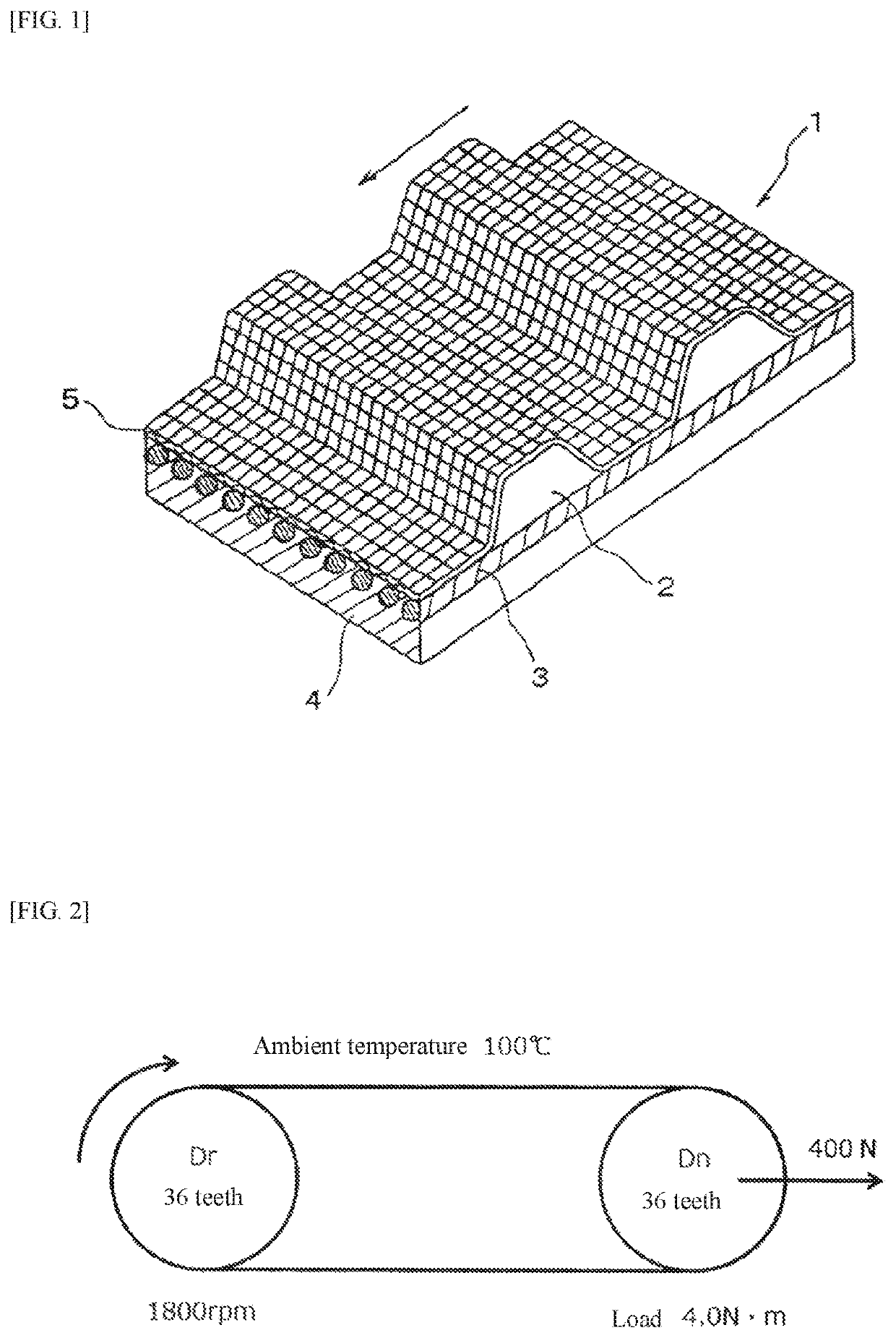Transmission Belt
a transmission belt and transmission belt technology, applied in the direction of driving belts, v-belts, mechanical equipment, etc., can solve the problems of difficult adhesion of fibers to fibers, thermal deterioration, and significant deterioration of durability of toothed belts, so as to improve mechanical properties such as abrasion resistance and modulus, and suppress peeling
- Summary
- Abstract
- Description
- Claims
- Application Information
AI Technical Summary
Benefits of technology
Problems solved by technology
Method used
Image
Examples
examples
[0083]Hereinafter, the present invention will be described in more detail based on Examples, but the present invention is not limited by these Examples. In the following examples, raw materials used in Examples, and a measuring method or evaluating method for each physical property are described below. Unless otherwise specified, “parts” and “%” are on a mass basis.
[0084][Raw Material]
[0085]EPDM: “EPT4021” manufactured by Mitsui Chemicals, Inc., ethylene content of 51% by mass, diene content of 8.1% by mass
[0086]Carbon black: “SEAST V” manufactured by Tokai Carbon Co., Ltd.
[0087]Silica: “ULTRASIL VN3” manufactured by Evonik Degussa Japan Co., Ltd., BET specific surface area of 175 m2 / g
[0088]Softener (paraffin oil): “DIANA PROCESS OIL PW 90” manufactured by Idemitsu Kosan Co., Ltd.
[0089]Anti-aging agent: “NONFLEX OD3” manufactured by Seiko Chemical Co., Ltd.
[0090]Zinc oxide: “second grade zinc oxide” manufactured by Sakai Chemical Industry Co., Ltd.
[0091]Stearic acid: “STEARIC ACID C...
PUM
| Property | Measurement | Unit |
|---|---|---|
| particle diameter | aaaaa | aaaaa |
| particle diameter | aaaaa | aaaaa |
| particle diameter | aaaaa | aaaaa |
Abstract
Description
Claims
Application Information
 Login to View More
Login to View More - R&D
- Intellectual Property
- Life Sciences
- Materials
- Tech Scout
- Unparalleled Data Quality
- Higher Quality Content
- 60% Fewer Hallucinations
Browse by: Latest US Patents, China's latest patents, Technical Efficacy Thesaurus, Application Domain, Technology Topic, Popular Technical Reports.
© 2025 PatSnap. All rights reserved.Legal|Privacy policy|Modern Slavery Act Transparency Statement|Sitemap|About US| Contact US: help@patsnap.com

